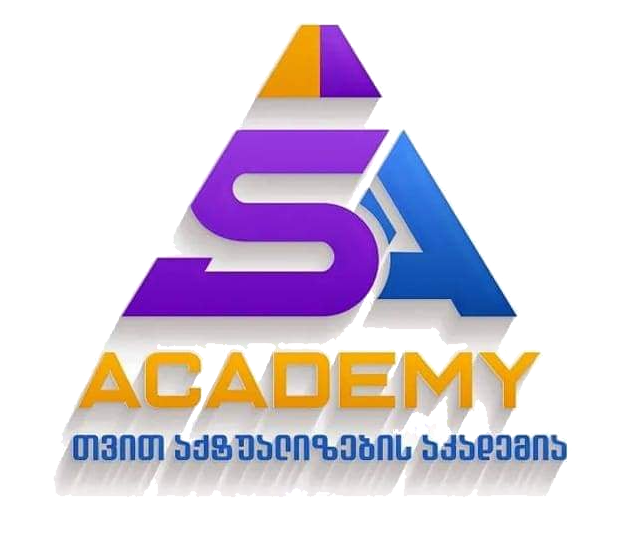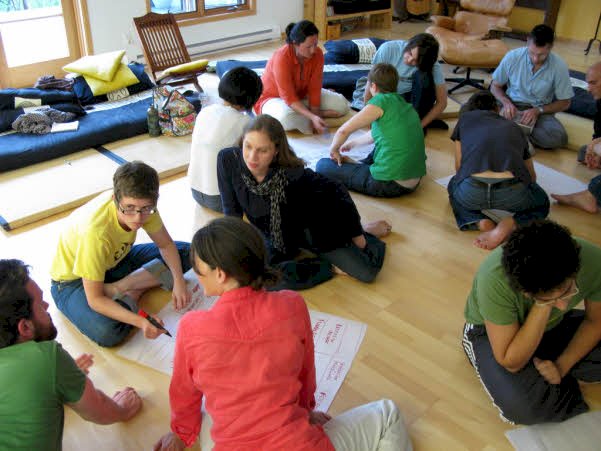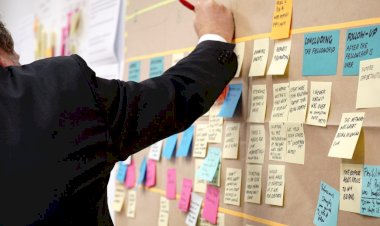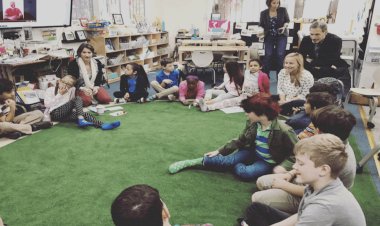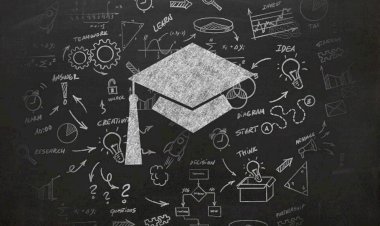STUDENT-CENTERED TEACHER AS A FACILITATOR TO ENHANCE THE LEARNERS’ SELF-ACTUALIZATION
Contemporary challenges of the world drive educational institutions to shift their concentration more on learning and the learning process than the mere teacher-centered teaching. Educators face any challenges to be learner-oriented.
Author: Nana Aleksidze, Doctor of Science of Education
2018
Abstract
Contemporary challenges of the world drive educational institutions to shift their concentration more on learning and the learning process than the mere teacher-centered teaching. Educators face any challenges to be learner-oriented. One of those challenges is making students to be convinced to learn more and better. The paradox of the contemporary education is that despite of the high-ordered desire to be learner-centered, they face difficulties when the matter is about the students’ involvement in the process. Learner-centered approach is oriented to the learners and to their cognitive learning abilities. Creating the learner-centered environment is one of the most important means to optimize students learning. The learner-oriented approach and environment requires full and active participation of all the classroom members, including teachers, students for creating effective learner-centered climate. The whole process of learner-entered teaching is considered to be the automatic and immutable outcome of relevant and good teaching, where the main focus goes on the developing the pedagogical skills. It is the teaches who motivates, empowers, drives and encourages the learners, guides them to the learner centered direction, to become active participants in the ongoing processes in the classroom life, to think logically and be problem solvers, be real and life-long learners. The effectiveness of the learner-centered approaches is largely depended on the teacher’s choice and paradigms on the learning and learners, on the methods he/she chooses, on the shifting style from the teacher centered approach to the learner-centered one.
Key words: students-centered teaching, self-actualization, facilitative teacher
Introduction
Education has a major role of a person’s formation, for effective learning it is desirable to move toward a model in which students are actively engaged in the learning process. No longer is the student expected to be a passive absorber of information; but they are active, through the process of actualization where the teacher acts as a facilitator, equips the learners with all the capacities and skills to be self-actualized. These steps will lead to the following desired outcomes:
- student stimulation
- student actualization
- self-realization
- development of students’ human potential
The effectiveness of the learner-centered approaches largely depends on the teacher’s choice and paradigms on the learning and learners, on the methods he/she chooses, on the shifting style from the teacher centered approach to the learner-centered one. It is the teacher whose adopted methods should make the learners able to step aside and take the lead forward. It is the teacher, who is really working and should work the hardest most days in the classroom within the class, who should win, make synergy and go ahead. There is serious interest in the contemporary world on obtaining the skills of not only good teaching but also in good learning, the pedagogical activities, the educational practices that promote the learning. Teachers for maximizing and promoting the learning outcomes of the learners need to practice all the examples, ideas, researches and knowledge for promotion the learner-centered environment.
A typical school classroom is often pictured with the teacher talking for several hours while learners frantically try to write down everything that is said. This type of classroom has traditionally produced surface learning and has done little to promote meaningful learning.
Weimer (2002) makes the point that in the student-centered classroom the roles of teacher and student bear a great necessity to change, so that the teacher changes from the “sage on the stage” to the “guide on the side” who views the students not as empty vessels to be filled with knowledge but as seekers to be guided along their intellectual developmental journey (Wright 2011) cited by Weimer (2002).
The subjective function of person- centric education is the following:
- To provide opportunities for personal and professional growth, self-determination and creative self-expression in the profession
- To create conditions for self-development and development of the full potential of the student along with the student mastery of competencies as needed
- To allow the student to have a choice in the selection of tasks and activities whenever possible.
- To have students participate in group work, especially cooperative learning, in order to develop social and affective skills.
- To be a role model for the attitudes, beliefs and habits you wish to foster. Constantly work on becoming a better person and then share yourself with your students
Education leading to the main goal; to get that feature of Self-Actualized people what we may call eager to learn every time, getting well aware of how little one knows in comparison with what could be known and what is known by others (Maslow 1970).
To develop the features of freedom of choice, creativity, reliability and constructiveness to become the “Fully functioning person” (Rogers, 1969)
Teachers facilitating students to be motivated and engaged in the material they are learning choosing and presenting the topic that students need and want to know (Rogers, 1969)
Humanistic education, known also as person-centric/student-centered education, is an approach to education based on the work of humanistic psychologist most notably Abraham Maslow and Carl Rogers. The basic concern of the theory is the human potential oriented for growth. Personal freedom, choice, motivations and feelings had to have their place. The humanistic approach places a great deal of emphasis on students' choice and control over the course of their education.
Humanistic teachers believe it is important for students to be motivated and engaged in the material they are learning, and this happens when the topic is something the students need and wants to know.
Learner-centered teaching is oriented to the learners and learning, to reach the ultimate purpose of the approach, that is to empower students to become the well-equipped and developed life-long self-actualize learners, getting positive an defective learning outcomes and to prepare learners be realized and fully functioning humans. Satisfying the basic needs does not require much effort from the learners, as they are provided by the food and shelter; they are safe with the help of families, school and parents. Learners have recourse to be more thoughtful and oriented to satisfy the next levels of needs gaining love and friendly relationship , be more communicative, free from stress and anxiety, be oriented and encouraged to get more and better knowledge, reach to the stage of self-growth and self-esteem, become more autonomous learners, responsible for their role in the process of classroom activities and be inspired to reach the personal fulfillment to be self-actualized for their future realization becoming fully functioning human. The only means to help students reach this goal is to adopt thy learner-centered teaching as a most effective and productive approach in education. Teachers should provide students with delivering the meaningful, conscious learning, enable students to aspire and to be ready to live meaningful life. According to Maslow (1970), self-actualized people have the ability to live meaningful life and even though they have not fulfilled their basic needs, they still think life to be more meaningful which enables them to aspire towards the gratification of the basic and highest needs. Teachers while creating the learner entered environment should appreciate that lot of inexperienced learners are keen to choose worse rater that better without having steady ground for their choice, not being personally grown and aware of their own abilities and knowledge.
Taking the student-centered approach in education is considered the way for meeting the productive and positive outcomes of the learners learning and teachers teaching. Teachers in this sense are considered to effective managers of the classroom, who generally engage in the process of implicit theorizing and deciding how to create and formulate effective learner-centered classroom policy to respond to the learners needs and the major aspects of their learning , personal abilities and potential development.
Teaching according to Rogers (1969, p. 103) means to instruct and teachers are instructors, to make it possible to make steady connection between knowledge and skills, to make students know but set them free to learn under the instructed guidance of the teacher within the balanced power classroom conditions. The whole process of learner-centered teaching is considered to be the automatic and immutable outcome of relevant and good teaching, where the main focus goes on the developing the pedagogical skills. Teachers and people in the field of education know more about teaching but less about learning (Weimer, 2002). This fact requires the need of many resources that direct attention from teaching to learning. There should be paid much attention in the instructional changes and the management practices concerning the effective educational changes.
Adopting the learner-centered approach in teaching requires very significant changes in education:
Redistributing the balance of power within the classroom Taking long-standing assumptions about the teaching and learning goals
- Making steady and effective link between material delivery and real learning
- Making the role of the teacher even more important and indispensable in the process
Facilitative teacher motivates, empowers, drives and encourages the learners, guides them to the learner centered direction, to become active participants in the ongoing processes in the classroom life, to think logically and be problem solvers, be real and life-long learners. In the student centered classroom teacher holds many and diverse activities for actualizing the learners inner potential, seeking their talents, provoking their interests and discovering and rediscovering their real needs and abilities for the future usage and realization.
Traditional education, also dubbed "teacher-centered learning", situates the teacher as the primarily "active" role while students take a more "passive", receptive role. In a teacher-centered classroom, teachers choose what the students will learn, how the students will learn, and how the students will be assessed on their learning. Teacher-centered typically refers to learning situations in which the teacher asserts control over the material that students, the teacher tends to be the most active person who does most of the talking while students spend most of their time sitting in desks, listening, taking notes, giving brief answers to questions that the teacher asks, or completing assignments and tests. In teacher centered classrooms, teachers may also decide to teach students in ways that are easy, familiar, or personally preferred, but that might not work well for some students or use instructional techniques shown to be most effective for improving learning.
Teaching in the old and traditional teacher-entered conditions meant quite different, centralized and fully controlled actions committed on the learners, but world has gone much further from that point of the history. Now it needs update and the education should face all the challenges of the technologically developed, person- centric world. Teachers should ask themselves several questions while setting their learner-centered teaching goals:
- How can students be set free in the courses they did not choose?
- How can the instructor let their students to meet their needs, follow and fulfill their learning and personal goals?
- How can teaching and the course curriculum help them to achieve their goals and facilitate their learning?
- Where is the border line between teachers’ and students’ learning and teaching responsibilities?
Learner-centered approach pointed the new role of the teacher in education, very unlike and different form the traditional one, this role is new and challenging, the role in this approach of the teacher is not optional, it is alternative and motivational, comprises different and divers activities, constant updating and motion ahead often and regularly. Realizing the importance of active engagement in the process and encouraging the students to be innovative on the basis of the teacher guided innovative instructions and activities. Learning itself indispensably requires constant discovering and novelty, active connection between subject and object matters.
Good, learner centered teacher always know when to stop, hesitate, be pushed back and when to lit a fire, give drive and lead. Teachers should take brain-based (Doyle, 2008, p. x.) approaches not only themselves, but also for their learners, showing and explaining through various methods and activities how their brain works and how their abilities should be applied, how they can learn more effectively and get positive and productive learning outcomes. Teachers while shaping the learning environment, making contours and designing the whole process, should increase the active participation of their learners in the process. All those metaphors comprise the role of the teacher in the learner-centered environment, and the portrait of the student-centered instructor, as the guide, facilitator, keeping their attention and focus on the learners and the real learning process, making it authentic and meaningful.
There are several principles describing the teachers’ role in the learner-centered perspective:
Principle1: Teachers should quit doing most of the learning task, organizing material and its content, inventing examples, generating the questions, answering the questions, summarizing the content and discussions, solving and tackling the problems , offer many and interesting approaches, getting their learners involved, participating, motivating and actualizing them.
Principle 2: Teachers Do less Telling; Students Do More Discovering. Learner-centered approach requires less talk from the teacher and most discovering form the learners
Principle 3: Teachers Do More Design Work. In the learner-centered environment, teachers role in the instructional design aspect are even more important. Those activities, methods and assignment teachers make and prepare for the learners are the major tools through which the learning occurs as the real and authentic process. There are several stages comprising the teachers’ major role in design work:
Well organized and designed activities lead learners from the present already obtained knowledge and skill to the new and more interesting and productive competence. The sequences of the learning experiences the learners obtain are regulated to be not too easy and too difficult, related to each other and built on each other.
The assignment teachers invent should focus on learners’ productivity, motivation, interest and active involvement in the process. The assignment should serve the principle of learning for the purpose of usage, nor for the purpose for grades, should they not be fake, artificial, but authentic and real.
All the set activities and methods should serve one and the most important goal to increase students’ self-actualization, self-awareness and sense of responsibility for their learning.
Principle 4: Class Does More Modeling, The best way to do define the role of the master in the classroom as the role of the teacher, and to get to know how the work of the instructor is productive and goal oriented, is to look through the learners’ learning skills and their skillful approaches in the learning tasks. Doing more modeling in class by the students favors experiencing the learning process regularly. The process of modeling can be held in several ways by:
- Doing simple but important thing oriented to the learners’ interest, on the basis of their age and current learning and individual abilities
- Inventing the cases for making the learners more engaged and participated in the problem-solving process.
- Promoting the learners minds work creatively and asking questions to get to know what goes on in their minds.
- Sharing ideas with students, teacher to students and student with one another is an active and well organized well-regulated debate format.
These ways, according to M. Weimer (2002, p.87-88), motivate the learners to be self-reflected learners, to get more experience, to be ready as lifelong learners and productive and well prepared for their future career, being more realized and risk takers.
Principle 5: Teachers should do more to get students to learn from the teachers and from each other. This principle is focused on the significance of the group working and team building leadership environment within the learner-centered classroom management. This principle makes it important to promote the students’ working together, to promote their collaborative, communicative and cooperative skills.
Principle 6: Creating climate for Working and Giving More Feedback. Learner centered approach ensures the affective educational climate for learners, getting positive learning outcomes. The role of the teachers instead of only creating and designing the whole process of teaching and activities should be oriented on creating and maintaining relevant, desirable and motivational conditions to learning. Those well, organized activities are which focuses not only inner classroom life but out of the school life within the whole class and learners, creating the comfortable learning environment and desirable climate for learners to learn.
Teachers can use different ways of optimizing their students learning. Doyle (2008) figures out the four possible ways of it:
- Involving students in first-hand learning that means first step of the process is to change the attitude of the learners towards their work and role. Students still want their teachers to be more active and dictate their every action. By engaging students in the first hand learning, will make them feel their learning experience, figure out and discover the learning points themselves, make connection between their learning and life, the real world around them
- Freedom of choice motivates and drives students to be more active participant and taking their learning responsibilities. Students though the guidance of their teachers can easily acquire their nee role, improve their learning, change their behavior for better.
- Teaching students life-long learning skills comprises usage of every methods and techniques to optimize the learners learning and skills of being independent learners. Those skills comprise being autonomous, independent and self-regulated ones. Managing to solve challenges the real and future world will present to them.
- Promoting the relevance of learner-centered teaching, this aspect means to use teachers recourses for explaining students why is the learner-centered teaching must for their future success and convincing them to adapt to the approach.
Rogers (1969, p. 32) suggest concrete methods of being facilitative learner-oriented teacher. Teachers always should be oriented on the following basic elements:
- Persons-teachers should make their students feel free in planning their learning goals.
- Freedom can be academic freedom and inner (ibid, p.32).
- Facilitative teaching and facilitative method in education is concentrated to be oriented on giving this kind of freedom to students and to the learners.
- Teachers are free to set the teaching strategies fully oriented on the student centered educational features and learners are free to learn under the guidance of the learner centered teachers.
Interactions - this element determines the process of academic and inner freedom focuses on the relationship aspects.
There are aspects determining the conditions of interaction (ibid, p.32):
- Confronting a real problem
- Having trust in the human organism
- Perception of the realness in the teacher and in the students
- Acceptance
- Empathy
- Recourse providing
The stages of creating the relevant conditions for learner-centered classroom interactions should be well organized and precisely followed, without understanding the real problem and challenges the goals will not be defined in a right way, without having trust in her/himself and with others the actions could not be performed within a team.
Procedures- procedure is the process if planning and maintaining the actions focusing on the only goal to give freedom to learn and to facilitate students learning for getting the positive and productive learning outcomes. The procedural element of facilitative teaching requires maintenance of the process of setting goals, reviewing them and discussing their anticipated and forthcoming challenges and outcomes, the methods of pursuing the goals and fulfilling the planned actions.
Responses available to students. According to B.F. Skinner (1948) cited in Rogers (1969, p. 34) the responses can be: “emitted” and “elicited”. There are certain operators in learning requiring doing some effort to solve some problems, if the motivators up to the learner to choose and they are free in choosing and in acting, they are called “emitted” one.
The elicited response gives the motivation to perform the concrete action by stimulating the subject and, making his/her focus on the concrete operant as a priority in that kind of situations.
Recommendations
Rogers considers Facilitation as the only and effective means to form the productive student-centered classroom management and learner-oriented teaching.
- Gaining Learners’ trust-Making the classroom learn-centered teachers never do without gaining the trust from their students, according Rogers (1969. P. 75). Teaching should develop the trust in students; trust in the goals and to foster
- Feeling trust in them, having the inner freedom as individuals.
- Making learners be responsible and active-Facilitative learn-centered teachers can maintain such king of learners’ community, where they are motivated to take charge in their roles and responsibilities as learners in the educational process, be active participants having their voice and saying in creating the students-centered classroom management and environment.
- Creating the learning climate oriented to foster learners learning abilities to become real learner, creative scientists and scholars, practitioners and kind of self-actualized and self-grown individuals (Rogers, 1969, p. 105).
- Being Real-Teacher should always be real, Rogers (1969, p.106) considers that when a facilitator teacher is a real person, being what he/she is without pretending, is much more like to gain trust from the learners and effective outcomes.
- Being so called care-teachers who should express active caring to their students that means to maintain the prizing and making the learners feel worth in the process.
- Accepting students’ fear and resistance, stress and negative attitudes as fact and problems to be improved, making students feel as individuals and an inevitably important member of the whole team of classroom learners’.
- Bearing responsibility-Instructor, and facilitative teacher in order to be successful in maintaining student-centered classroom climate, According to Rogers(1969,p.39) should bear the responsibility for maintaining his/her own interests, providing facilitative methods to the learners on the basis of educational and psychological aspect.
- Getting students first feel comfort and freedom in the process, tale responsibility and charge of their role in the learning, equip them with needed skills , empowering them concentrate on their potentials, learning and personal abilities , setting their learning and professional goals through making them self-reliant and self-actualized lifelong learners.
Effective learner centered teachers should know what is necessary for the learners to know. Construction of knowledge is always generated from that one already perceived or believed before, ere the stake is on those beliefs which may either be or turn to be false and which determines our perception of reality. Developing learners skills and awareness in learning, is one of the indispensable issue in the learner centered approach in the sense of function of content, this aspect itself implies some sub aspects:
- Thinking developmentally, this means to equip learners with those skills to think holistically, developmentally and intellectually.
- Taking advantage of the Need-to Know and Ready-to-Learn Moments, to get the meaning of the real concept of the content. Teachers should focus on the age and intellectual level of the students to use the material so that students catch the meaning, discover the sense in the content are ready to learn and need more or further activities for development.
- Partnering positively with Learning Center Professional, means when the mutual understanding and communication skills are well adjusted and applied by the learners. Teachers should beyond the learning skills teach and motivate learners to develop social and communication skills, so called help-seeking behaviors, to benefit their lifelong learning and their actualization as future professionals, mates and for the development their personal growth.
- Using Supplementary material, means that those supplementary materials are mostly very productive and fruitful for the development of the learner’s critical thinking, holistically thinking, problem solving and mutual understanding. The material should be chosen mutually on the agreement of the teacher and the learners and linked to the main content of the material. Teachers are obliged to think very attentively about choosing the material, as it should give something new but not should be deviated from the main concept of the material. It should develop learners’ creativity, innovatively thinking skills and sharing the ideas. Learning Skills Development comprises all the above mentioned skills and even more, there is some more concrete technical aspect of learning skills in the sense of the function of content, which are (Weimer p. 60)
Conclusion
Looking to the learners’ behavior, one will discover that, what we see, greatly reflects the instructor dominated actions, as they are too weak in having responsibility in their own decisions in the learning process and lack motivation to be independent learners guided by the teacher, they rely on someone, on the teacher to dictate, prompt or even order what to do, they require to be pushed to make some actions. Getting students being active, decision makers, having freedom of choice and active participants in the class in the learning is not an easy work, as if the teacher hesitates to give answer what to do , they miss the point and are at a complete loss.
Teachers often blame students in being lazy, reluctant, wanting teachers being used and making most of the talk in most of the time. But we may put the question: Do they really and honestly believe their being at school is for being passive and dependent, as they appear? This is the fundamental question in this sense making it clearer what is the role of the learners and what is the role of the teacher in education.
Creating the learner centered environment is one of the most important means optimizing the students learning, educators need to apply new and existed methods , practices and principles which develop knowledge , skills and attitudes that will increase the learners’ learning achievements and teachers productivity. On the bases of human nature of the learners, they are confident only the when they know why do the teachers want them to be active, collaborative and responsible and what are those benefits for learners those skills can give. By creating meaningful learning , sharing control, keeping balance of power, realizing their roles, taking their personal and learning responsibility, being collaborative and cooperative, teachers will manage to optimize the students learning and lead them to reach the state of being lifelong learners. The first needed step to make for teachers is to equip students to the adaptation skills to be well adjusted to the changes. Learning is not only receiving or absorbing information passively, but it is process of active and effective application of the knowledge. For promoting the learner-centered approach there should be connection between the practice and the reality already discovered and experienced. The bridge between the reality, research based data, practice and theory is hardly needed to be built. The question is who should do and match this connection. This is the responsibility for everyone and for no one definitely, as all those persona lies being in the educational process are equally responsible to do the task.
Educators who adopt the learner centered approach in teaching make significant focus on development of the learners’ collaborative and cooperative skills which contribute to students’ critical thinking abilities, participation in the classroom activities and ability to take ownership over their learning. By taking the students-centered approach teachers make it possible to create an environment where students are free to learn, free to make choices and are inspired to develop skills of creativity, generate new ideas about their learning and be confidents , have the inner freedom of being real and themselves. Student-centered teaching enables learners to acquire the needed skills to use them in their future practice and be lifelong self-directed, self-regulated and self-reliant actualized learners (Moate, 2015).
References
Doyle, T. (2008). Helping Students Learn in a Learner-Centered Environment. Sterling, VA: Stylus Publishing, LLC
Maslow, A., H., (1970). Motivation and Personality. New York: Harper & Row.
Moate, R., M. (2015). Learner-centered pedagogy: considerations for application in a didactic course. The Professional
Counselor, 5, 3. Retrieved from http://tpcjournal.nbcc.org/learner-centered-pedagogy-considerations-forapplication-in-a-didactic-course/
Rogers, C. (1969). Freedom to Learn. Columbus, Ohio: Charles E. Merrill.
Weimer, M. (2002). Learner-Centered Teaching. San-Francisco, CA: Jossey-Bass.
Wright, G. B. (2011). Student-centered learning in higher education. International Journal of Teaching and Learning in Higher Education, 23, 92–97.
Sources:
IRCEELT-2018, THE 8th INTERNATIONAL RESEARCH CONFERENCE ON EDUCATION, LANGUAGE AND LITERATURE, Conference Proceedings, ISSN 2298-0180,E-ISSN: 2587-4721
https://www.scribd.com/document/392573640/IRCEELT-2018-Proceedings
